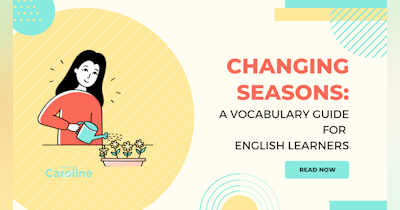Hello my beautiful students!
One of the most rewarding aspects of learning a new language is being able to share and create stories. Stories are universal - they can transcend cultural boundaries and engage audiences in truly enchanting ways.
If you're learning English, this post will guide you on how to craft short stories, fairy tales, or fables. In the process, you'll not only enhance your reading skills but also expand your vocabulary and gain a better understanding of sentence structures. Let's dive into the magical world of storytelling!

Your story can only be as rich as the words you use to tell it. To create interesting narratives, you must have a wide range of words at your disposal. Reading widely, from novels to newspapers, helps you to encounter new words in context and understand their usage. Make sure to jot down any unfamiliar words and their definitions to review later. Use flashcards or language apps to practice these new words, and try to incorporate them into your writing and conversations.
Teacher Caroline's Tip: I recommend Quizlet for online flashcards.
Step 2: Understanding Sentence Structure
A firm grasp of sentence structure is key to conveying your thoughts clearly. English sentences usually follow a Subject-Verb-Object pattern (e.g., "The cat (subject) chased (verb) the mouse (object)"). However, there are also compound, complex, and compound-complex sentences that add depth and variety to your storytelling. Learning these structures can be done through grammar books or online resources. Practice writing sentences of different types and lengths to familiarize yourself with their structure.
Step 3: Creating Characters
Characters are the lifeblood of any story. They can be humans, animals, or even mythical creatures - the choice is all yours! When designing your characters, consider their personalities, physical traits, motivations, and how they interact with others. This is your chance to let your imagination run wild! You can even base characters on people you know, twisting and embellishing their traits to suit your story.
Step 4: Setting The Scene
Every good story requires a captivating setting. This can be a real-world location, a fantasy land, or somewhere in between. Use descriptive language to paint a vivid picture of your setting. Focus on the five senses: what can your characters see, hear, touch, taste, and smell in this environment? Practice writing descriptions of places you know well to get the hang of creating engaging settings.
Teacher Caroline's Tip: Thesaurus.com is a great place to discover synonyms and antonyms to help you describe your characters and settings.
Step 5: Plotting Your Story
The plot is the sequence of events that make up your story. Typically, stories follow a three-part structure: beginning (introduction), middle (conflict), and end (resolution). In the beginning, introduce your characters and setting. In the middle, create a problem or conflict that the characters must overcome. Finally, in the end, resolve the conflict in a satisfying or surprising way.
Step 6: Writing Dialogue
Dialogue is a powerful tool in storytelling. It brings your characters to life, shows their personalities, and moves the plot forward. To write convincing dialogue, remember to give each character a distinct voice. Listen to real-life conversations to understand the natural ebb and flow of dialogue. Also, it's not necessary for characters to say exactly what they mean. Often, what is left unsaid can reveal just as much about a character or situation.

The first draft of your story is just that - a draft. Don't be disheartened if it's not perfect; every story can be improved with review and revision. Check your story for spelling, grammar, and punctuation errors. Ensure that your story flows smoothly, and that there is a balance between description, action, and dialogue. Reading your story aloud can also help you spot awkward or unnatural sentences.
Step 8: Share Your Story
Finally, share your story! Whether it's with classmates, teachers, friends, or family, getting feedback can be incredibly useful. You'll discover what parts of your story resonated with readers, and which parts might need tweaking. Plus, the more you practice sharing your stories, the more comfortable you'll become with using English in a creative and expressive way.
Remember, it's ok if it is not perfect or if your English has mistakes. Enjoy the process, learn and have fun!
In conclusion, storytelling in English, like learning the language itself, is a journey. It requires practice, patience, and above all, a willingness to make mistakes and learn from them. The joy of sharing your imagination with others makes the effort worthwhile. So, go ahead and spin your tale - the world is waiting to hear your story!
Happy practicing!

















